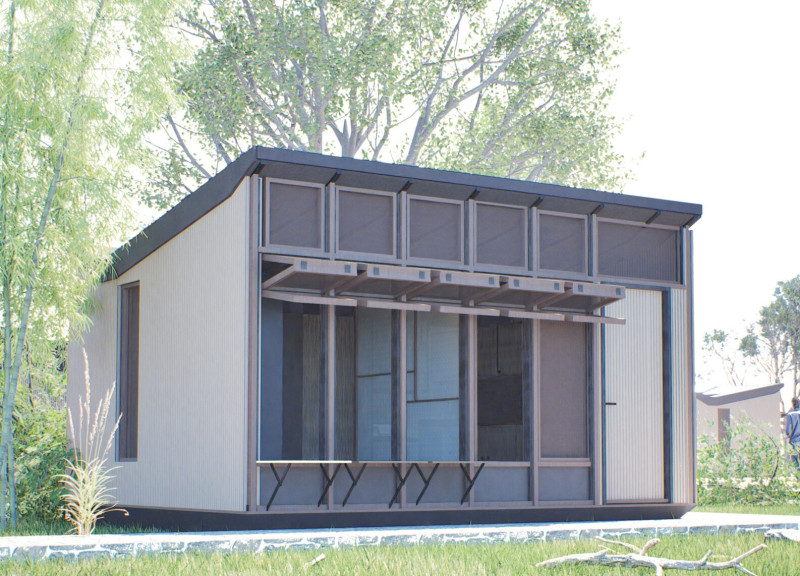5 key facts about this project
The architecture showcases a careful consideration of materials and spatial relationships, which are essential to the project's overall impact. The use of natural materials such as wood, stone, and glass reflects a commitment to sustainability and a harmony with the surrounding landscape. These materials are combined in a way that enhances the structural integrity while fostering an inviting atmosphere. The wooden elements not only contribute to the warmth of the design but also interact beautifully with the stone, providing a contrasting texture that enriches the visual experience.
Functionally, the project is designed to accommodate [insert function here], catering to the needs of its users in a way that feels intuitive and accessible. The spatial layout facilitates easy flow and connectivity, allowing for a seamless transition between public and private areas. Large windows punctuate the building’s facade, not only inviting natural light into the interior spaces but also framing views of the landscape beyond. This connection to the outdoors is a crucial design decision, reinforcing the project's roots in its geographical setting while promoting an engagement with nature.
The architectural design incorporates several unique approaches that distinguish it from conventional designs. For instance, the project emphasizes open-plan living, blurring the boundaries between indoor and outdoor spaces. This fluidity is enhanced by the strategic placement of outdoor terraces and gardens, designed as extensions of the internal environment. Furthermore, the incorporation of renewable energy solutions, such as solar panels and rainwater harvesting systems, illustrates a forward-thinking attitude toward ecological responsibility.
Attention to detail can be found throughout the design, from the meticulously crafted entryways that invite users into the space to the thoughtfully selected furnishings that complement the architectural intent. Each design decision appears purposeful, from lighting fixtures that enhance the ambiance to flooring choices that resonate with the overall material palette.
In addition to aesthetic considerations, the project also addresses cultural narratives relevant to its location. By integrating local design motifs and historical references within its architectural language, the project bridges the past and present, contributing to a richer understanding of the community's identity. This thoughtful approach ensures that the design resonates with local inhabitants while also appealing to a broader audience who may visit.
Overall, the project exemplifies a successful integration of form and function, responding appropriately to environmental, social, and cultural contexts. The architecture stands as a model for contemporary design that pays homage to tradition while looking toward the future. For those wishing to delve deeper into the intricate layout and innovative solutions presented in this project, it is encouraged to explore the architectural plans, architectural sections, architectural designs, and architectural ideas, which provide further insights into the thought processes and creative decisions that inform this impressive body of work.


 Daniel Enyonam Kodzo
Daniel Enyonam Kodzo 























